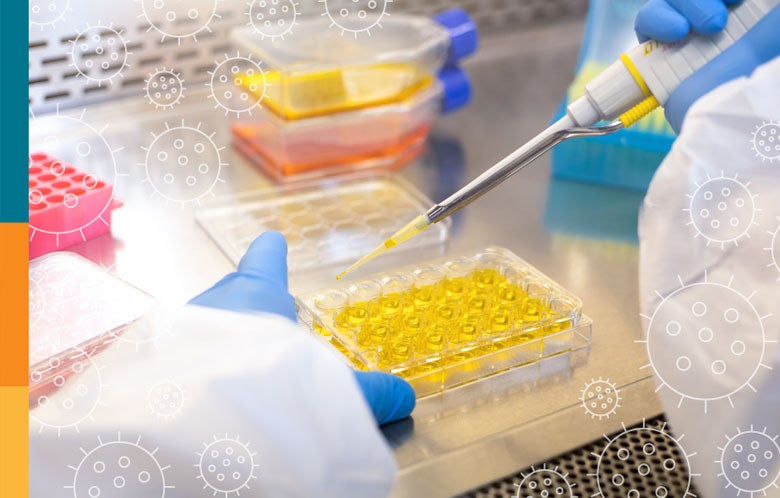The detection of SARS-CoV-2 variant strains (i.e. mutants) is perhaps the least surprising finding of the COVID-19 pandemic. Though the term mutant may convey alarm, viruses mutate naturally due to an inherently error-prone replication process. Because viruses reproduce quickly, diverse viral populations are possible even within a single infected individual. Most viral variants disappear before detection, and only those with a selective advantage (such as easier transmission) will become dominant in a population.
Fear that mutations can make a virus more deadly is also common, but most often variants of respiratory viruses are not more virulent. That is, they’re unlikely to cause more severe disease and/or death because the sickest patients (and especially those who have died) are less likely to pass the disease on to others. But that doesn’t mean SARS-CoV-2 variants are not cause for concern. Increased transmissibility could thwart infection control measures and result in more hospitalizations and deaths simply due to more infections. Variants that subvert immunity could decrease the extent of protection elicited by natural infection or vaccination. Further, variants could reduce the efficacy of therapeutic agents and even reduce the accuracy of diagnostic testing, which compounds enhanced transmissibility by obstructing the ability to identify and isolate contagious patients.
The first SARS-CoV-2 variant, which carried a spike protein amino acid substitution D614G, emerged early in the pandemic. By June 2020, the D614G variant replaced the original strain to become the dominant circulating strain globally. Another variant known as B.1.1.7 was detected in September in the United Kingdom. By December it was flagged as a “variant of concern” because it was quickly becoming the dominant variant in the London area, and as of January 31, 2021, it has been detected in 80 countries, including the United States. The B.1.1.7 variant has 14 lineage-defining mutations including a few in the spike protein that appear to confer higher binding affinity to the cellular receptor. A third variant know as the B.1.351 lineage was detected in South Africa in October and another called B.1.1.28 was first detected in travelers from Brazil in January 2021 (this variant has since been renamed P.1 lineage). Some of the same spike mutations have evolved spontaneously in these distinct SARS-CoV-2 variant strains, suggesting that immunologic pressure may have provoked similar selection of these variants.
It is becoming clear that that these particular SARS-CoV-2 variants increase transmissibility of the virus. Genetic surveillance and modeling studies estimate the B.1.1.7 variant to be 50 to 75 percent more transmissible. Further, while lockdowns stifled transmission of previous SARS-CoV-2 strains, infection control measures were less effective at blocking the spread of B.1.1.7 in the U.K. The mechanisms by which different mutations confer a selective advantage of these variants is an area of intense investigation.
Despite some reporting to the contrary in the mainstream press, there is no evidence to-date that any of these SARS-CoV-2 variants are associated with more severe COVID-19 or death. A technical briefing from the Scientific Advisory Board for Emergencies (SAGE) in the U.K. reported preliminary findings from unpublished analyses suggesting potentially increased risk of death associated with the B.1.1.7 variant. However, without access to the primary data set and methods, we are unable to independently confirm these conclusions.
In terms of the efficacy of vaccines against these SARS-CoV-2 variants, a few recent studies reveal some insights. In a preprint (non-peer reviewed) study with 20 volunteers who received two doses of Pfizer/BioNTech (n = six) or Moderna (n = 14) vaccines, both mRNA vaccines elicited antibodies capable of neutralizing SARS-CoV-2 variants. However, plasma from vaccinated people was less effective at neutralizing variants with specific mutations, a finding similarly observed in a preprint study from Moderna that showed a six-fold reduction in antibodies able to neutralize the B.1.351 variant. Despite lower neutralizing antibody titers, it is expected that the vaccines still elicit protective immunity against the current SARS-CoV-2 variants. Moderna is also investigating the benefit of a booster dose of vaccine directed against variants.
It’s hard to predict the clinical impact of these and future SARS-CoV-2 variant strains. As we exert more immunologic pressure on the virus due to increasing rates of natural- and vaccine-acquired immunity, we may find different variants than those discovered today. Broad genetic surveillance will be necessary to monitor for variants and track their clinical impact.



